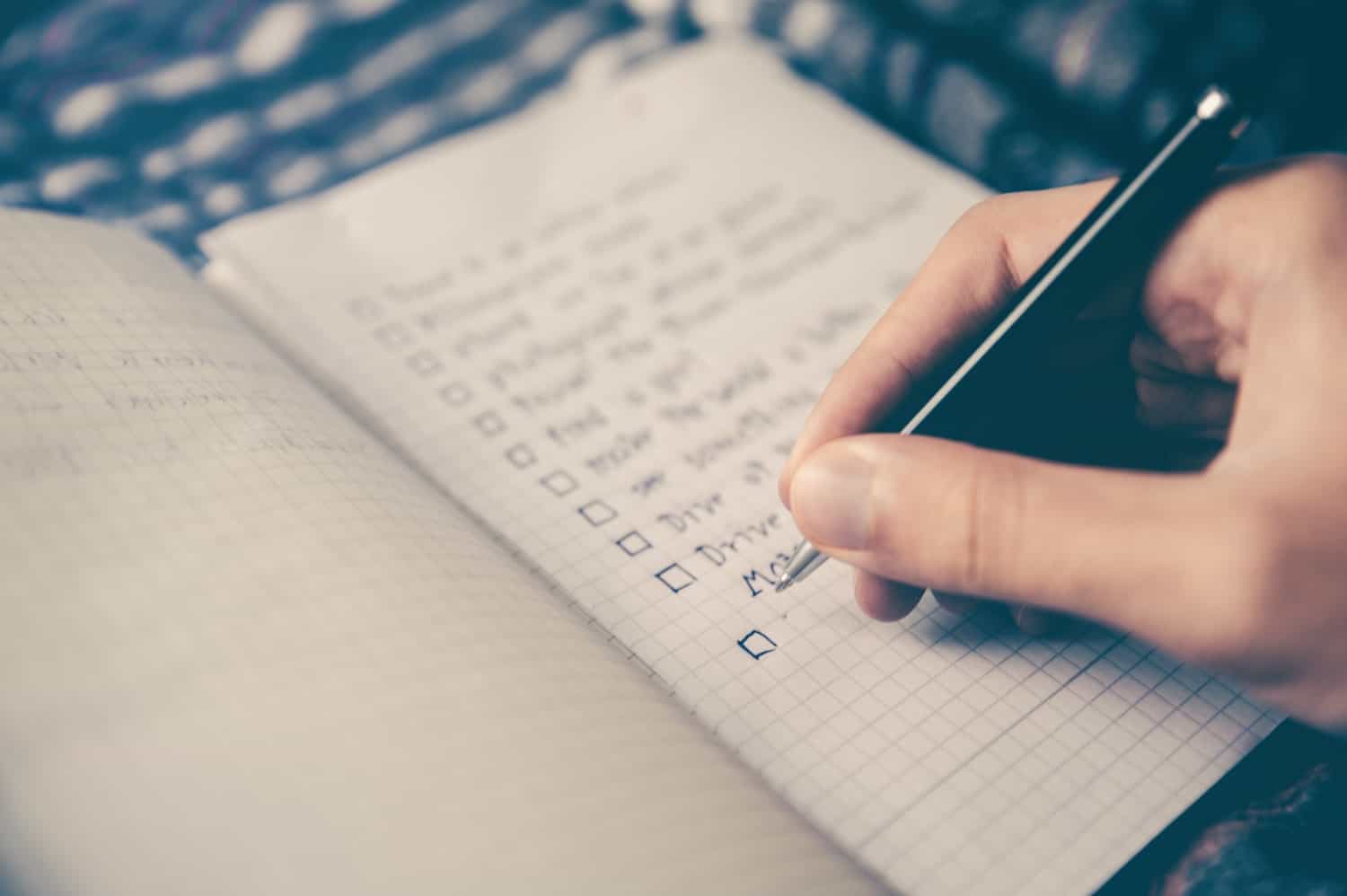Now that you have sold your home, the next step is to get ready for the move. We’ve put together a checklist to get you organized and make the big day as stress free as possible.
More than a month before the move
- Start a moving expense book. Some of your expenses may be tax deductible, so be sure to save your receipts.
- Get written estimates from at least two moving companies and make sure the movers know all the items which are to be included. Do not include jewelry or other small valuables. Don’t be misled by rate generalities, inquire about additional charges and methods used to compute time. Some membership organizations offer mover discounts. Ask for references from the movers.
- Hire a mover and get a written commitment from the moving company confirming the date of the move and the time of arrival.
- Ensure you have adequate insurance for goods in transit.
- Contact provincial health insurance authorities for the province you are moving out of, and the one that you are moving into. If it is within the same province, notify them of your change of address.
- Order any cheques you may need with the new address.
- Register your change of address with the post office as well as the following:
- Driver’s License
- Health Card
- Insurance home and auto. Different postal codes have different premiums so you may be able to save some money on your car insurance
- Doctor
- Bank / Credit Card Companies
- Employer
- Car Company if you lease your car
- Loyalty programs
- Begin mailing change of address cards. Keep a list of cards sent, don’t forget to notify all credit card companies.
- Schedule the change / termination of service of the following utilities:
- Phone
- Internet
- Alarm Company
- Cable
- Newspaper / Magazines
- Hydro
- Water
- Gas
- Garbage
- Snow Removal
- Magazine Subscriptions
- Some companies might ask for the names of the new / previous owner; keep your agreement of purchase and sale handy for that information.
- Gather together all important documents (medical, dental, school, veterinary, etc.) or schedule their transfer.
- Resign from any clubs or organizations that are not active in your new community.
- Collect and send out all items to be cleaned or repaired before the move.
- Cancel cleaning service, pool maintenance, window cleaners, snow removal, etc.
- Take a good look at what is worth taking and what is not. Be ruthless!
- Have a garage sale. Get rid of all the junk you don’t need to take.
- Go to Canadian Tire and buy a small plastic tool box. Fill your tool box with a utility knife, scissors, tape measure, and one of every screwdriver. You will love this tool box it will keep your basic tool requirements handy and organized. You may well need it.
Packing & Storage
- It’s never too early to start packing. Start packing by throwing out items you know inside you will never use again. An added benefit is that you will have to pack less for the move.
- Get packing paper, pad for inventory, and marking pens. Large inexpensive plastic painters drop sheet will protect your floors/carpets.
- Boxes or containers for packing, heavy twine or masking tape. Purchase sturdy boxes (less likelihood of incurring damage to your articles) or use a box rental company like Frog Box.
- You need wide box sealing tape and should have an oversupply of it.
- Empty gasoline from lawn mowers, outboard motors, etc.
- Remove batteries from toys and appliances to prevent them from accidentally being switched on during the move and to protect those items from battery corrosion.
- Number all of the boxes, keep an inventory list. Mark the contents of each of the boxes. Make two copies of the contents list for each box. Keep one with your inventory list, put the other inside each appropriate box just before you close it up. Seal boxes well. Properly sealed boxes stack better.
- Clearly mark cartons you want loaded last, unloaded first, and where they are to go in the new house.
- Tie or tape mops, brooms, curtain rods in bundles.
- Point out and boldly mark especially fragile or delicate items.
- Do not overload drawers when packing items in dressers.
- Liquids in bottles should have tops secured. A good way to seal liquids containers is to unscrew top, place small piece of plastic wrap over the top then screw the top back on over plastic wrap. This method works on cleaning supplies, food, even liquor.
- Large mirrors, glass tabletops and valuable pictures can be crated.
- Books should be packed on edge in small boxes.
- Carton weights should not exceed 60 pounds.
- Table lamps should be packed. Pack lamp shades in boxes by themselves.
- Do not use newspaper to pack anything; the ink rubs off.
- Do not leave shelves loose in refrigerator or stove. Use your duct tape!
- Small appliances should be wrapped and packed in the bottom of boxes.
- Do not pack cleaning products in the same box as food.
- Place heavy china items at bottom of boxes.
- Small items should be packed in a small box inside a larger one.
- Move clothes in wardrobes supplied by mover.
- Drapes can be moved in wardrobes as well.
- Large power tools should be dismantled for moving.
- Take down any fixtures fastened to wall.
- Clean rugs and drapes.
- Protect delicate furniture with a coat of wax.
2 Weeks before the move
- Clean out club and school lockers.
- Book freight elevator if you are moving into or out of an apartment.
- Make a floor plan of the new house and plan where everything will go. Don’t guess measurements. Your movers will love you and your move-in will go quicker
- Return all items that you have borrowed, get back what you have loaned. Good luck on this one!
- Dispose of flammable items.
- Take down any fixtures fastened to wall.
1 Week before the move
- Prepare a list of all items you want to take with you personally. Include all jewelry and valuable items which should not be entrusted to movers. Don’t forget that the queen travels with her
- jewels in a box right beside her. You should too.
- Dismantle and / or fasten anything that requires it.
- Confirm the bookings for the freight elevator (out and in).
- Confirm the booking with the moving company.
- Defrost and air-dry the deep freezer.
- Use up perishable food.
- Buy bottled water, garbage bags, paper towel + cleaning supplies for move-in day.
1 day before the move
- This is your last day to pack.
- Do your last laundry. Disconnect and drain the washing machine.
- Disconnect, defrost and air dry the fridge.
- Double check that all valuables have been accounted for.
- Lead packers around the house and make sure they understand all of your instructions.
- Make sure you have gathered together all the keys for the new owners (don’t forget garage and shed keys!)
- If you have a security system, why not change the code to something simple like 1-2-3-4-5 so you can feel free to use your regular code at the new house.
- Pack all of the items that you will take with you personally. Mark them “do not load – for car”. It would be better if these were out of the house before the movers come in. If you are moving within the city take these times to a friend for safekeeping. If not, probably the safest place would be locked up in your car’s trunk.
Moving Out
- Meet with your movers and be nice to them, buy them coffee and muffins. This is probably the most important hint in this checklist.
- Lay down plastic sheets to minimize dirt in the house.
- Lead the packers around the house again and make sure they understand all of your instructions.
- Do a final check for forgotten items.
- Check inventory for number of boxes – break down by room.
- Check mover’s bill of lading against your inventory.
- Clearly label and leave all the spare keys, and the code for the security systems if you have one, inside the house unless other arrangements have been arranged.
- Keep your kids occupied by making certain that each has their favourite games, blankets, music, electronics with them. Or better yet plan for some childcare to keep them occupied while you move.
Moving In
- Get to the house before the movers. Arrange to take milk, bread, coffee, tea etc. with you. It will be a long day. Also buy a couple dozen premium donuts and give them to the movers before they start moving your furnishings in.
- Verify that the utilities have been turned on.
- Lay down plastic sheets to minimize dirt in the house.
- Find your floor plan and give copies to the movers. When your goods arrive look at each item carefully as it is put in place and check off your inventory.
- Note any damage. You won’t be able to check goods which have not been unpacked so above your signature on the bill of lading write “subject to loss or hidden damage”.
- Top priorities will be the children’s rooms, tv or radio, and a basic kitchen.
- Don’t forget that you will need a place to sleep.
- Hang up curtains if possible.
- Seeing as you have not yet unpacked, go out and have a nice dinner. Buy some champagne, you deserve it.
Realtors are usually able to refer many service providers and pleased to provide recommendations when asked.

